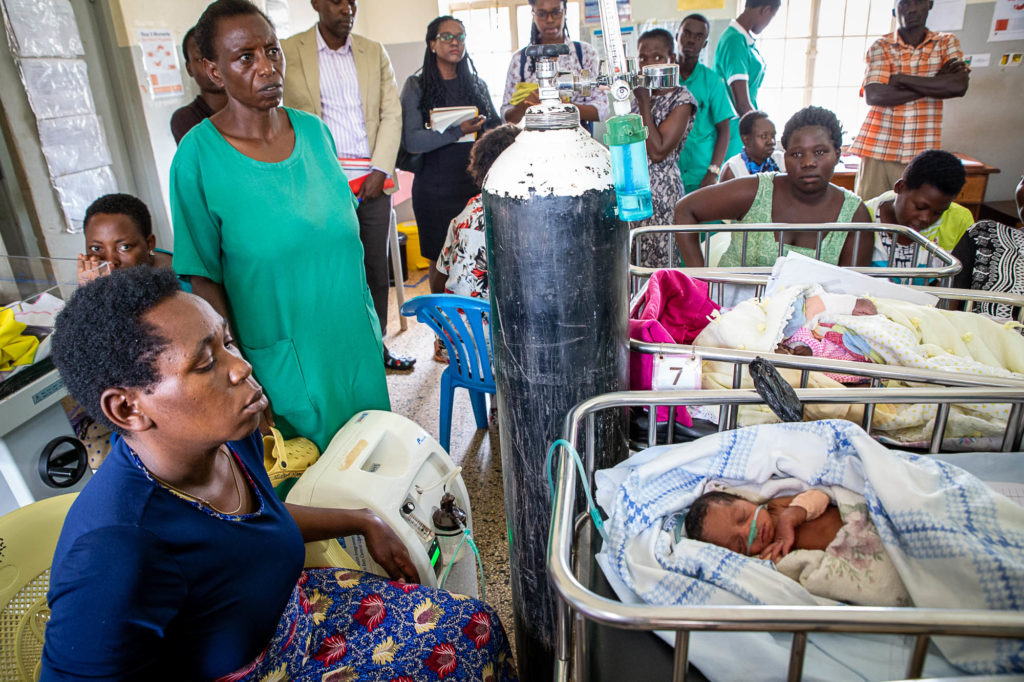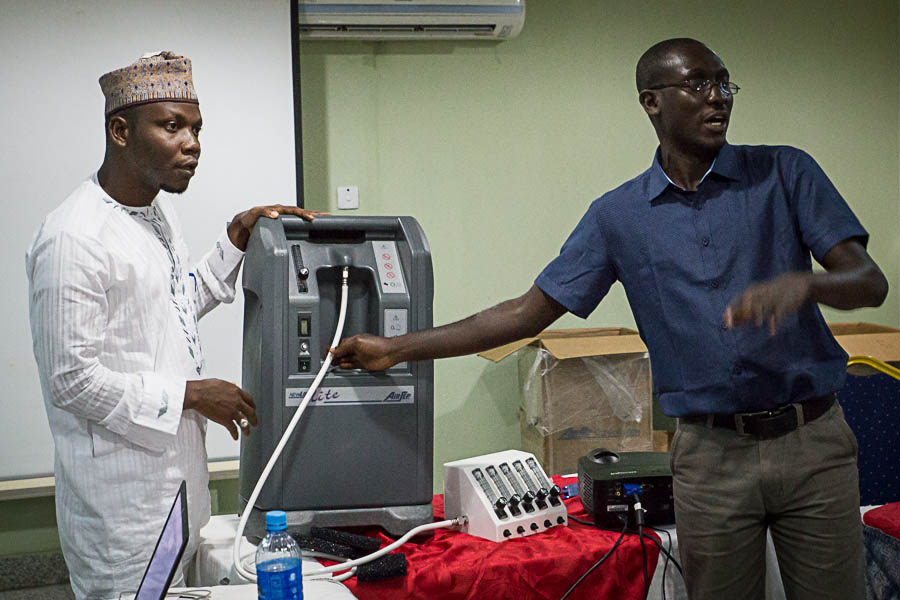Hold your breath for a few moments. Are you holding it? OK; now think back to your high-school biology classes—the ones about oxidative phosphorylation. I know, I know: if you’re like most people, you probably forgot about oxidative phosphorylation as soon as the test was over. Stay with me for a moment. And keep holding your breath.
Oxidative phosphorylation, as a quick refresher, is the process by which your cells use oxygen to create most of the energy for just about everything they do. The details aren’t important right now, but what is important is that your body needs oxidative phosphorylation in order to make the energy that keeps it alive—and oxidative phosphorylation requires oxygen. (Oh, also: keep holding your breath!)
This means pretty much every part of your body needs oxygen for pretty much everything it does. That’s why we have lungs and that’s why we breath constantly, unconsciously. (But you shouldn’t be doing that right now!) When we don’t get enough oxygen, the trillions and trillions of chemical reactions that make our bodies work shut down. No oxygen, no energy. No energy, no life. OK, you can breathe again.
Unless you have an Olympic swimmer’s lungs, that was probably very uncomfortable. And now we know exactly why: when you stop breathing, you aren’t getting enough oxygen in your blood. When you aren’t getting enough oxygen, your whole body starts fighting to get it. In this case, you were choosing not to give your body oxygen and everything inside you was telling you this was a poor choice. But what if it weren’t a choice?
Learn more about CHAI’s Oxygen Therapy program
Too little oxygen in the blood—a condition medical professionals call hypoxemia—is a life-threatening complication of many severe illnesses. Pneumonia patients often develop hypoxemia, but it’s also common in less obvious conditions like malaria, meningitis, and premature birth. Unlike you, these patients don’t choose to get less oxygen. They are physically unable to get enough of it because of their illness. And that makes them much more likely to die.
If you’re wondering why you’ve never heard of hypoxemia before, it isn’t because its rare.
Where we work, in low- and middle-income countries, hypoxemia is so common that one in six children under the age of five and one in five infants admitted to hospitals are hypoxemic. Hypoxemia likely contributes to over 800,000 preventable deaths every year. Most of these are children.
 The treatment for patients with hypoxemia is surprisingly straightforward: give them more oxygen. High-purity, supplemental oxygen is a staple of modern medical care and has been used to save lives in wealthy countries for over one hundred years. The goal of supplemental oxygen is not to cure the underlying disease but to keep the patient alive long enough for other treatments to do their work. In pneumonia, for example, this means buying a patient enough time for antibiotics to help clear the infection in the lungs.
The treatment for patients with hypoxemia is surprisingly straightforward: give them more oxygen. High-purity, supplemental oxygen is a staple of modern medical care and has been used to save lives in wealthy countries for over one hundred years. The goal of supplemental oxygen is not to cure the underlying disease but to keep the patient alive long enough for other treatments to do their work. In pneumonia, for example, this means buying a patient enough time for antibiotics to help clear the infection in the lungs.
But patients in low- and many middle-income countries can’t access this essential therapy. In the health facilities we’ve surveyed across five countries – India, Nigeria, Ethiopia, Kenya, and Uganda – over 90 percent lack pulse oximeters (the simple handheld devices used to measure blood oxygen levels) and fewer than half have a reliable oxygen supply. It shouldn’t surprise us, then, that only about 20 percent of hypoxemic patients are diagnosed and less than half of these receive the oxygen therapy they need.
This is unacceptable.
While access to oxygen is taken for granted in wealthy countries, high prices and weak equipment maintenance systems keep it out of reach for vulnerable patients in low-resource settings. The absence of medical oxygen impacts patients of all ages and across many diseases. Children with pneumonia, mothers in distressed labor, car accident victims—anyone who needs critical care needs oxygen. Today, during the COVID-19 pandemic, the need is growing enormously: per World Health Organization (WHO) treatment guidelines, COVID-19 patients require two to six times more oxygen than the average non-COVID-19 ICU patient.
Lack of oxygen leads to increased mortality for all age groups, genders, victims of trauma, and disease. But it also means improving access to oxygen therapy is an opportunity to improve outcomes not for one or two specific groups, but across entire populations—an opportunity to make many types of severe illness treatable rather than a virtual death sentence.
Health facilities in low-resource settings face enormous challenges—and introducing reliable systems to deliver life-saving oxygen is no different. Health workers often lack the support they need to do their jobs well: they face shortages of supplies, seldom receive the kind of mentoring and continuing education that is the norm for their high-income counterparts, and frequently do without high-quality clinical guidelines, protocols, and job aides. Often, the infrastructure available in these facilities suffers from poor maintenance due to scarce resources and a lack of trained technicians.
That’s why CHAI partners with governments and health administrators to support health workers—with the right guidelines, tools, and training—to identify patients who need oxygen and confidently administer the right amount at the right time. It’s also why we work with health systems administrators and hospital managers to increase investments in the right equipment, improve their technicians’ skills, and secure competitive prices that make already-stretched budgets go further.
Our work in sub-Saharan Africa and India has shown we can bring this lifesaving treatment to low-resource settings. We’ve spent the last four years working with health facilities and government partners in India, Nigeria, Ethiopia, Uganda, and Kenya to test and refine our strategy. And we have seen dramatic improvements—ensuring over three quarters of hypoxemic pediatric pneumonia patients received oxygen in pilot health facilities.
Now the COVID-19 pandemic has laid bare longstanding deficiencies in oxygen access and created an overwhelming demand for biomedical equipment—including pulse oximeters, oxygen concentrators, and ventilators—and we are working hard to provide emergency support to global partners and country governments striving to rapidly increase access to oxygen therapy. At the global level, CHAI is using our relationships with manufacturers and suppliers to help secure affordable equipment for LMICs. In our partner countries, our teams are heavily embedded in national response planning and coordination—leveraging years of practical experience in oxygen systems implementation to help ensure short-term response investments lead to long-term improvements in access to oxygen.
We know these countries are ready. We’ve worked with their Ministries of Health to lay a foundation for scale: putting in place specific, actionable plans to improve oxygen delivery infrastructure, developing the clinical guidelines necessary to support clinicians, identifying the best models for maintaining equipment, and forging partnerships with private organizations capable of expanding their capacity to meet demand. Over the next five years, we not only aim to rise to the immediate challenges presented by COVID-19, but to dramatically improve access to oxygen across these five countries and halve their hypoxemia-related deaths by the end of 2025.
Making oxygen routinely available to everyone who needs it is a daunting challenge, but the world has never been better positioned to close the oxygen access gap. Too many patients will be left holding their breath if we wait.






